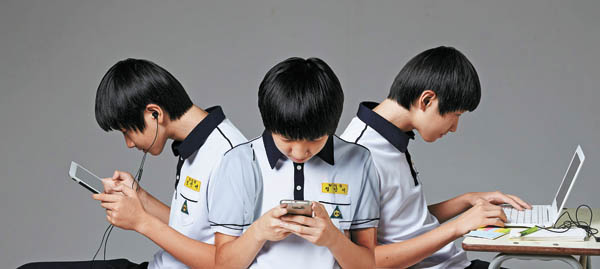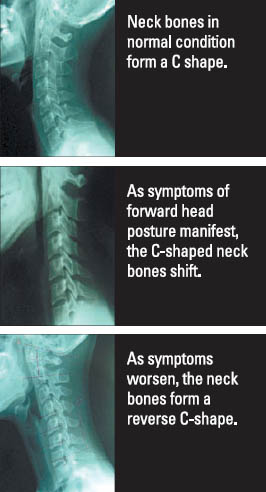Time online leads to rise in physical ails

At the hospital, the doctor diagnosed him with forward head posture, an anterior positioning of the cervical spine often referred to as “scholar’s neck.”

Simple online connectivity problems can often lead teenagers to turn angry and become nervous. Though physically in their teens, the health problems they experience are typically associated with those in their 30s and 40s.

Many reasons, from entertainment to education, explain why teens are so hooked to their devices, though it can come at the cost of their health.
The data showed that 13.2 percent of teenage respondents said their health deteriorated after using the Internet, and 12.4 percent answered they had headaches after Internet use.
When using computers, people most often use their shoulders and neck, keeping their head down. In case of smartphones, both the head and back are slouched. Normally, the neck bones form what looks like a “C,” though this shape can change with ill posture.
“In youth, one hasn’t finished growing yet, so the neck bones can easily shift,” Choi said. “When getting older, degenerative changes, like a slipped disk, can happen early.”
Carpal tunnel syndrome is also reported to be becoming more common among teenagers who use a keyboard and a mouse for long periods. The number of patients diagnosed with the condition was 666 in 2009. Four years later, that number has increased to 861.
One’s skin is also affected by the excessive use of smartphones and electric devices. Teens who use computers until late at night often experience breakouts.
“Once you throw off your biorhythms due to a lack of sleep, it will lead to changes in your skin,” said Kim Beom-joon, a dermatologist at Chung-Ang University Hospital. “Teenagers can have worse skin problems.
Moreover, the electronic waves radiated from mobile phones can cause respiratory infections, experts say. The inside of the human nose is lined with cilia, which filter out harmful substances. But the electronic waves undermine that, which can lead to diseases like rhinitis.
Some teenagers also suffer from xerophthalmia, or dry eyes, a condition in which the eyes cannot produce tears, as they blink less when looking at a monitor or smartphone screen for too long. “Different from adults, myopia [near-sightedness] during adolescence can progress much faster,” said Suh Young-woo, an ophthalmologist at Korea University Ansan Hospital. “Computers and smart phones mainly lead to myopia.”

According to the Journal of Korean Academic Society of Nursing Education, elementary school students who use electronic books are more likely to be easily irritated and experience a decrease in concentration and an increase in anxiety.
“If smartphones are used as text books, more will start reporting VDT Syndrome,” said Seomun Gyeong-ae, a nursing professor at Korea University. “Having a break and enough exercise is required to prevent it.”
Experts said when using electric devices, teenagers should set a schedule - 50 minutes for studying and 10 minutes for resting, for instance. Students must also pay attention to their posture when sitting in a chair. Because they are still growing, the position of their desk and chair should match their height.
“Teenagers often don’t have any revelations about their body,” Choi said. “If parents notice something different about their child’s growth, posture or moods, they should consult an expert.”
BY KIM SUN-YEONG [nam.yoonseo@joongang.co.kr]










with the Korea JoongAng Daily
To write comments, please log in to one of the accounts.
Standards Board Policy (0/250자)